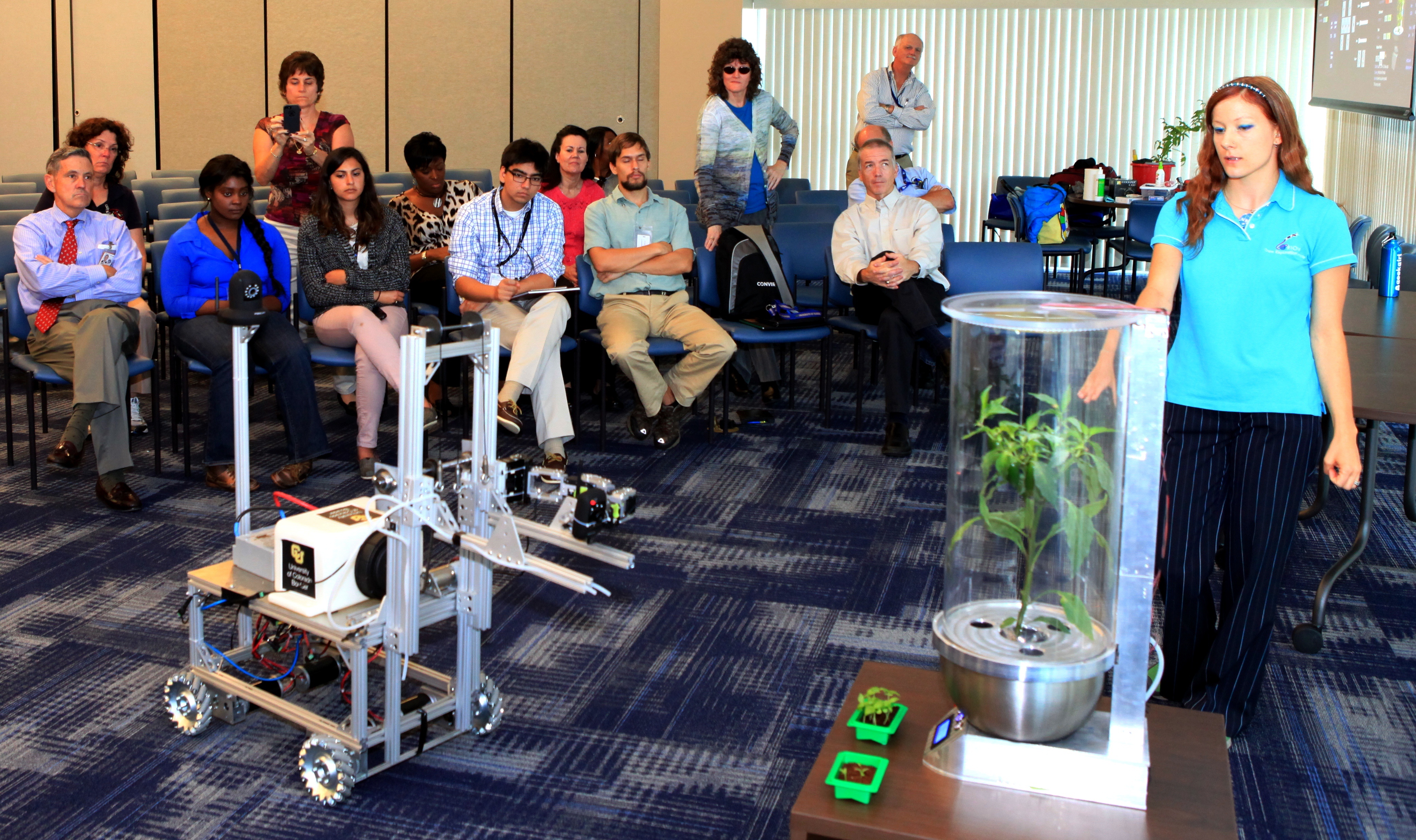**Revolutionizing Deep-Space Exploration with Robotic Gardens**
For more than a half-century, NASA has been at the forefront of turning science fiction into reality. From landing on the moon to exploring the depths of space, the agency has continuously pushed the boundaries of what is possible. Now, a team of graduate students from the University of Colorado Boulder is taking on the challenge of designing robots to work in a deep-space habitat, tending gardens and growing food for astronaut explorers. This innovative technology, once thought to be only possible in the realm of science fiction, is now becoming a reality thanks to the dedication and ingenuity of these students.
**Creating a Self-Sustaining Habitat**
As astronauts venture further beyond Earth, the need for self-sustaining habitats becomes increasingly important. This includes the ability to grow fruits and vegetables in space. The University of Colorado team’s entry in the eXploration HABitat (X-Hab) Academic Innovation Challenge, titled “Plants Anywhere: Plants Growing in Free Habitat Spaces,” aims to revolutionize the way plants are grown in deep-space habitats. Instead of dedicating a specific area for vegetation, their approach involves distributing plants in any available space within the habitat.
**Engaging Students in STEM**
The X-Hab challenge is not only about developing innovative technologies for space exploration but also about engaging and retaining students in science, technology, engineering, and math (STEM) fields. By linking student design projects with senior- and graduate-level curricula, the competition provides hands-on experience in designing, researching, and developing functional prototype subsystems for extraterrestrial habitats and deep-space exploration missions.
**The Distributed Remotely Operated Plant Production System**
The University of Colorado students showcased their project, the Distributed Remotely Operated Plant Production System (DROPPS), at Kennedy’s Space Station Processing Facility. This system is designed to produce edible plants during long-term missions to destinations like Mars. By utilizing robots to handle monotonous tasks, such as tending to plants, astronauts can focus on more critical responsibilities.
**Innovative Technology for Plant Growth**
The team’s new system features a Remotely Operated Gardening Rover (ROGR) that travels around the habitat tending to SmartPots (SPOTS) distributed throughout the living space. Each SPOT contains a small hydroponic growth chamber with computerized systems to monitor plant progress. These SPOTS can measure various environmental factors like soil humidity, air and water temperature, lighting, nutrient levels, and pH, providing valuable data for plant maintenance.
**Enhancing Astronaut Well-Being**
While living in a space habitat is inherently mechanical, humans still crave interaction with nature. The team aims to optimize the system to allow astronauts to derive psychological benefits from interacting with plants. By incorporating plants into the astronauts’ environment, they can enjoy the sights, smells, and experiences of being around greenery in space.
**Preparing the Next Generation of Space Explorers**
Involving students in projects like the X-Hab Challenge is crucial for preparing the next generation of engineers, scientists, and explorers for NASA’s space program. By providing real-world exposure to the systems engineering process, students gain valuable experience and insight into the complexities of space exploration. The guidance and support from NASA experts and instructors further enhance the students’ learning and development.
**Looking Towards the Future**
The X-Hab Challenge continues to inspire innovation and collaboration among universities, students, and NASA. As the University of Colorado Boulder and other institutions embark on new projects for deep-space habitats, the possibilities for future space exploration are endless. With a focus on designing a Deployable Greenhouse for Food Production for deep-space missions, the students are paving the way for sustainable food sources in space.
**Conclusion**
The University of Colorado Boulder’s groundbreaking work in developing robotic gardens for deep-space habitats is a testament to the power of innovation and collaboration in advancing space exploration. By engaging students in STEM fields and pushing the boundaries of technology, NASA and universities are shaping the future of space exploration. As we look towards the stars, the vision of astronauts tending to gardens on Mars may soon become a reality, thanks to the dedication and creativity of these students.

